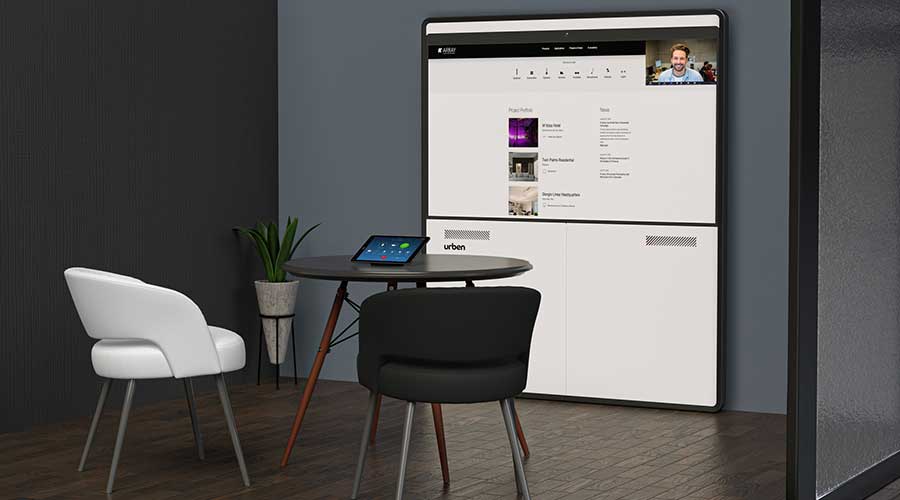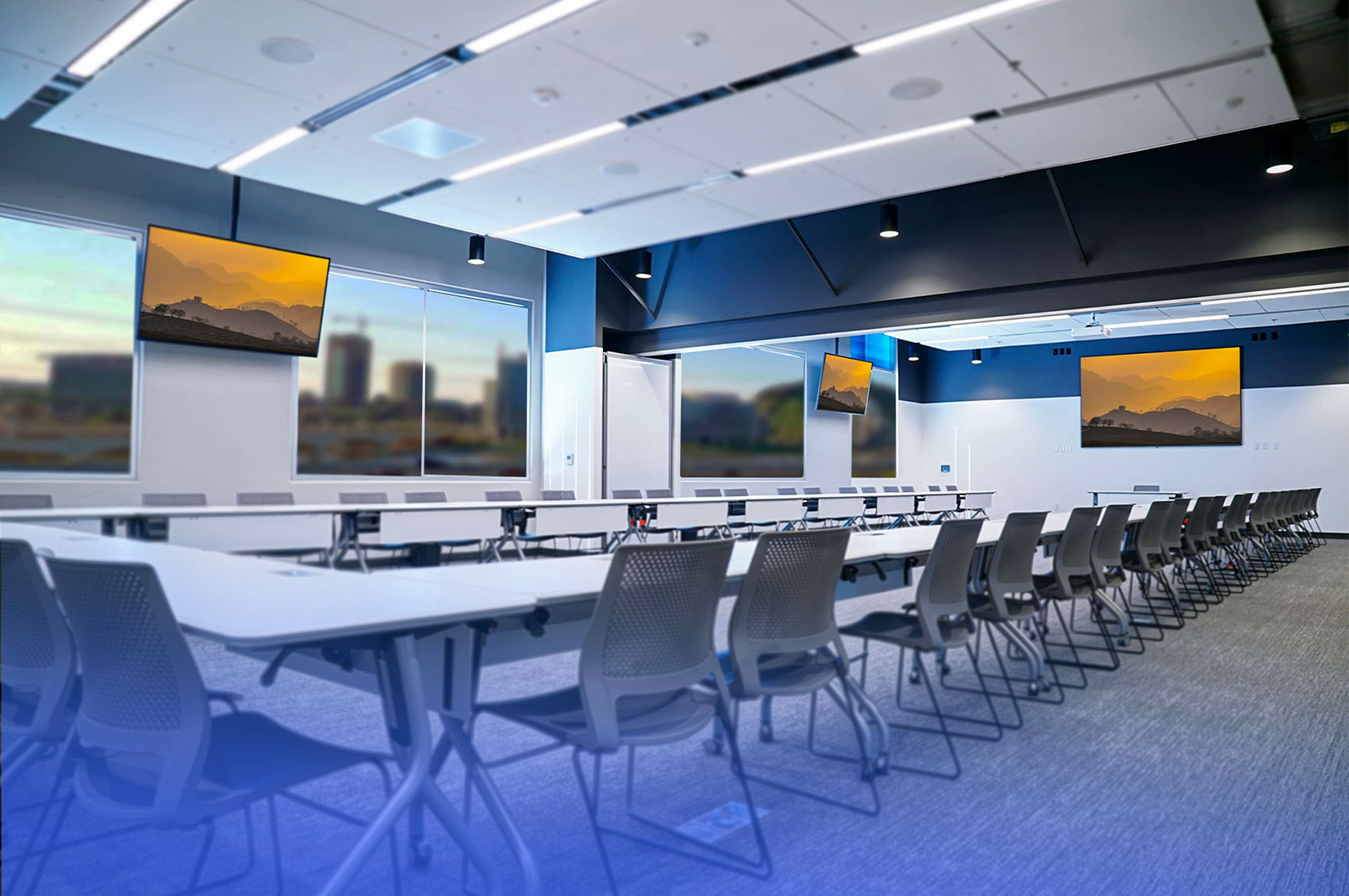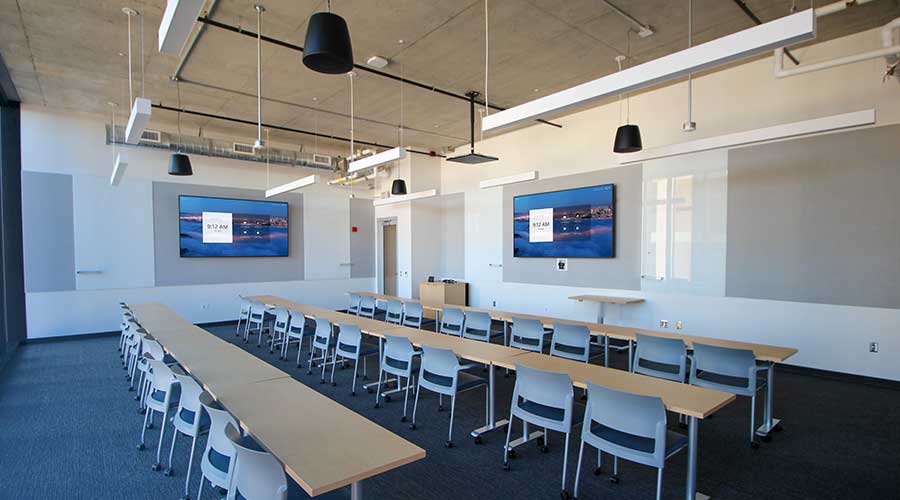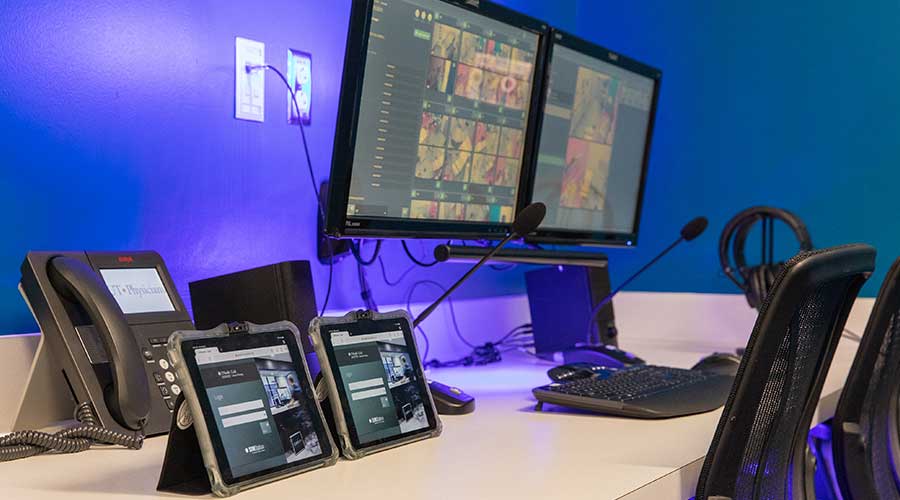Simulation training has become the gold standard of healthcare education. But when it comes to experience and training for simulation technicians and simulation operators, the industry is still working on standard requirements and expectations. Many people interested in working in the simulation field are left to decide the best training and education on their own, and many institutions who need to hire new sim techs don’t know what to look for. If you are looking to hire new simulation technicians, applicants with an EMT (emergency medical technician) certification are a good place to start. In fact, several of the simulation experts working at Level 3 AV started out as EMTs themselves. In a recent webinar they outlined some of the reasons EMT experience is great preparation for work as a sim tech.
on Saturday, 16 February 2019.
Posted in Emergency Medicine Simulation, Medical Simulation Training
CONFERENCE ROOMS ARE OUT, HUDDLE SPACES ARE IN... HERE’S WHY.
A lot has changed in the workplace since the days your grandpa or dad put on a tie, suit coat and hat and headed out the door to the office day after day. Every day is casual Friday and employees are just as likely to work from a coffee shop as a desk. And there are other, more significant changes that go deeper than the surface. The way people actually do their work—and want to do their work—has evolved as well. To get the most creativity, innovation, and productivity out of your workforce, you have to create an environment and corporate culture that matches employees’ preferences and expectations. Many companies have discovered that huddle rooms are the key to letting employees work how they want, which in turn means companies get what they want out of their employees. Below are some key ways work styles have evolved and how huddle rooms can help you capitalize on those changes.
on Friday, 15 February 2019.
Posted in Conference Room Design, Conference Rooms
DESIGNING A TRAINING ROOM? HERE’S THE AV YOU NEED
Your corporate training team has spent weeks preparing for a company-wide training event. The invitations have gone out, the presenters have been confirmed, the PowerPoint slides are ready to go. But is your training room equipped to handle what’s coming? If participants have to wait for the training to start while the presenter struggles with the technology, or they miss what is being shared because of low-quality AV, it doesn’t matter how brilliant your training material is. People will remember the impact of the bad tools more than the value of the good content. So how do you make sure you have the right technology to make every training session a smooth-running success? Start by choosing these three tools for your corporate training rooms.
on Wednesday, 13 February 2019.
Posted in Training Room Design
WANT TO UP YOUR SIMULATION GAME? BOOT CAMP CAN HELP
As a simulation technician or operations specialist, you know how valuable training can be in helping you better manage and operate your organization’s simulation center. You may also know that Level 3 Audiovisual’s three-day, all-inclusive simulation boot Camp is the best place to get that training. Now you just need to convince your boss or manager to pick up the tab to send you. Here are five reasons the simulation boot camp is money well spent.
on Saturday, 09 February 2019.
Posted in Medical Simulation Training, Simulation Training
HOW TO GIVE REMOTE STUDENTS THE CLASSROOM EXPERIENCE
Distance learning and extension programs are excellent ways for higher education institutions to increase enrollment and reach without making large investments in new buildings, staff, and other infrastructure. But the colleges and universities that will benefit the most these programs are those that create a remote learning experience that is equal to that of the classroom. Here are three questions to help you determine whether remote students can participate to the same extent and in-classroom students—and here’s how to fix it if they can’t.
on Tuesday, 05 February 2019.
Posted in Higher Education, Hybrid Classroom
DITCH SIMULATION SYSTEM DOWNTIME WITH NON-CLOUD MONITORING
It used to be that the biggest threat to classroom training was a broken piece of chalk or a dead bulb in the overhead projector. As more and more medical training programs and healthcare facilities incorporate complex simulation systems and technologies, however, the number of things that can go wrong are increasing. And each of those glitches and the downtime they create can have negative impacts to classroom and training schedules and outcomes. When a simulation system goes down, for example, classes get cancelled, and training plans and schedules fall behind. But the fix is often complicated and time-consuming. Simulation systems may include microphones, speakers, and cameras, as well as control rooms and debriefing software. For these complex systems, the best fix is the ability to identify issues early and respond to them rapidly. And that is exactly what Pulse IDM —an intelligent device monitoring system designed for the SIMStation solution—does. The 24/7 monitoring provided by Pulse IDM can minimize problems that negatively impact the use of simulation systems and resolve issues that do arise more quickly and with less disruption to users.
on Monday, 21 January 2019.
Posted in (EMS) Simulation Lab, AV Remote Monitoring and Management
HOW MOBILE RECORDING CAN IMPROVE YOUR DISASTER TRAINING
If there’s a massive pileup on the freeway and 50 injured patients head to your emergency room, will you be ready to receive and treat them? If an earthquake damages your corporate offices, do you know how to evacuate everyone quickly and safely? If a military helicopter collides with a commercial airliner at your airport, are you prepared to coordinate a multi-agency response? Just as simulation training has become an integral part of healthcare education, it is increasingly used in disaster preparedness training as well.
on Monday, 14 January 2019.
Posted in Simulation Debriefing, Simulation Training
CHEAP SIMULATION SYSTEMS AREN’T A BARGAIN—HERE’S WHY
If you are trying to decide between two pairs of navy blue socks and one costs $5 while the other costs $25, the decision is likely a no-brainer. When it comes to comparing and choosing simulation software, however, you shouldn’t make your decision based on price alone. Unlike socks, going with a lower-priced simulation system could cost you the functionality and ease-of-use you need to meet your objectives. And low quotes on simulation systems often don’t include AV installation and other ancillary costs, so your “good deal” often ends up being more expensive in the end. So, if you can’t choose between simulation systems based on price, what should you be looking for? Here are 3 questions to ask yourself before you choose a simulation solution.
on Wednesday, 09 January 2019.
Posted in (EMS) Simulation Lab, Healthcare Simulation
 Simulation Experts Discuss Value of EMT Training
Simulation Experts Discuss Value of EMT Training 







